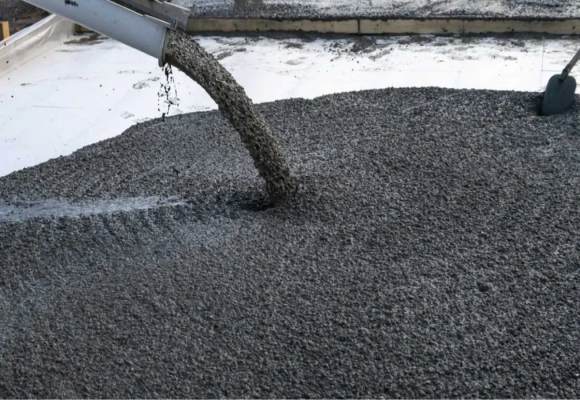Concrete is a building material widely used in various construction projects. It is made by mixing materials such as cement, aggregates (sand, stone), as well as water, additive, etc. After hardening, it has high compressive strength and durability. Below, we will provide a detailed introduction to the basic knowledge of concrete, including its characteristics, purpose, model, usage precautions, production process, and transportation methods.

The Characteristics and Uses of Concrete
Concrete has the advantages of high compressive strength, good durability, and low cost, so it is widely used in the field of construction. It can be used to build various buildings, such as residential buildings, commercial buildings, bridges, roads, etc. Concrete can be hardened through various methods, such as natural hardening and the addition of hardening agents.
The Type Of Concrete
The type of concrete is usually classified based on its compressive strength. Common types of concrete include C20, C25, C30, etc. The larger the number, the higher the compressive strength. Different types of concrete can be used for different construction projects, for example, high-rise buildings require the use of high-strength concrete, while bridges require the use of special concrete with frost resistance.
Precautions For the Use of Concrete
When using concrete, the following points should be noted:
- The Proportion Should Be Accurate
The proportion of concrete needs to be determined according to specific engineering requirements, and the proportion of cement, aggregate, and water must be accurate.
- Mixing Should Be Uniform
When mixing concrete, it is necessary to mix thoroughly to ensure that the aggregates and cement are well mixed and to avoid segregation.
- Timely Pouring
The concrete needs to be poured within a certain period of time, otherwise it will affect its hardening effect.
- Proper Maintenance
After the completion of concrete pouring, it is necessary to maintain appropriate temperature and humidity for it to harden normally.
4.The Production of Concrete
The production process of concrete includes stages such as batching, mixing, and transportation. Firstly, determine the proportion of concrete according to the engineering requirements, and prepare raw materials such as cement, aggregates, and water. Then, these raw materials are placed in a mixer for thorough mixing to form concrete. Finally, transport the mixed concrete to the construction site for pouring.
5.Transportation Method of Concrete
The transportation methods of concrete include mixing truck transportation and pumping. Mixing truck transportation is the process of loading mixed concrete into a mixing truck and transporting it to the construction site. Pumping is the process of pumping concrete through pipelines to the pouring site. When using pumping methods, it is necessary to pay attention to the pressure and distance of pumping to avoid problems such as pipe blockage.
More concrete machinery is available on lutonmachinery.com.
Concrete is a building material composed of a mixture of cement, aggregates, and water. After hardening, it has high compressive strength and durability, and is therefore widely used in various construction projects. The characteristics of concrete include high compressive strength, good durability, and low cost. According to the classification of compressive strength, concrete types include C20, C25, C30, etc. When using concrete, attention should be paid to accurate mixing ratio, uniform mixing, timely pouring, and proper curing. The production process of concrete includes batching, mixing, and transportation, and the transportation methods include mixing truck transportation and pumping. Understanding the basic knowledge of concrete helps to better select and use this building material, ensuring the quality and safety of building projects.